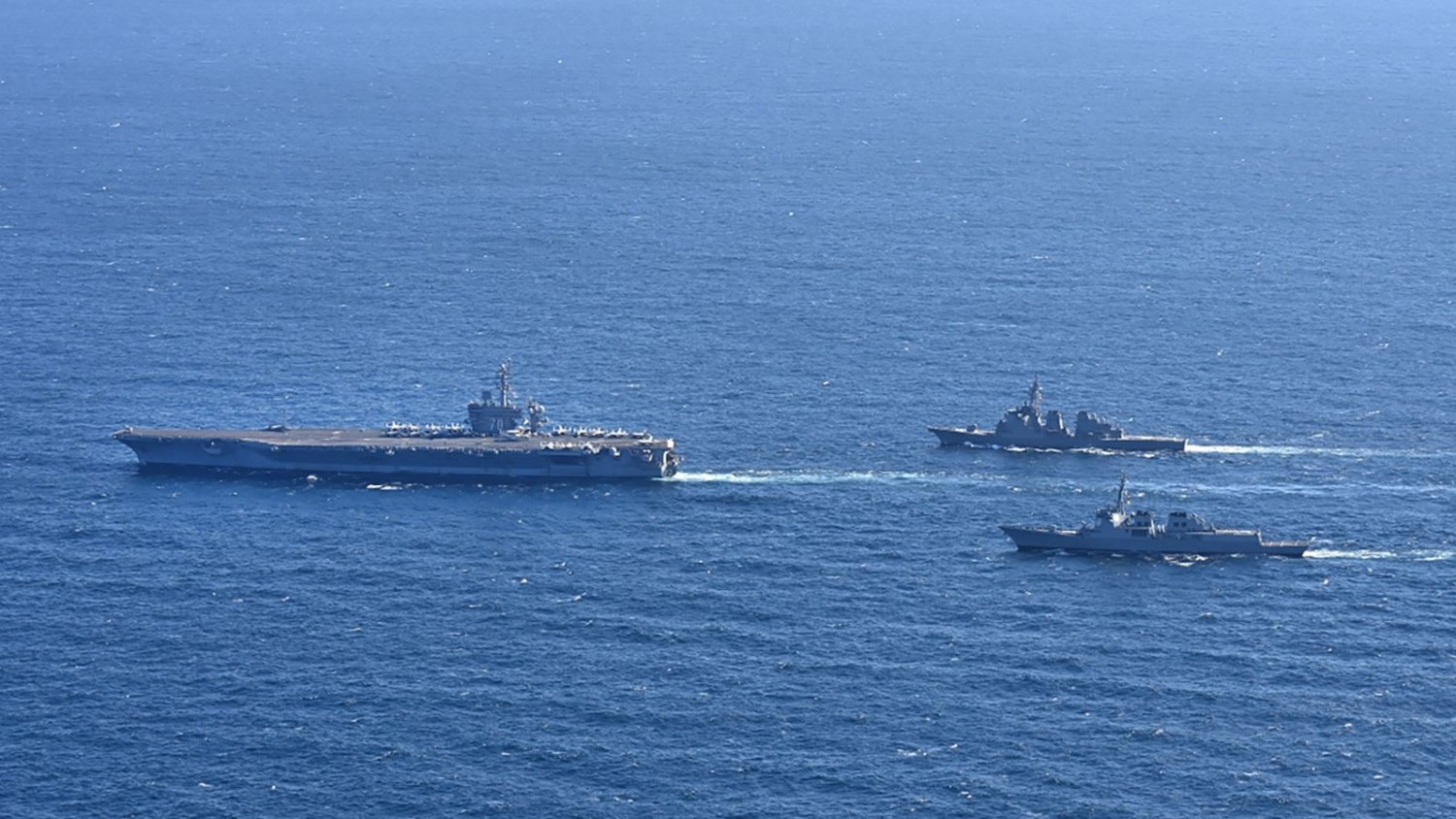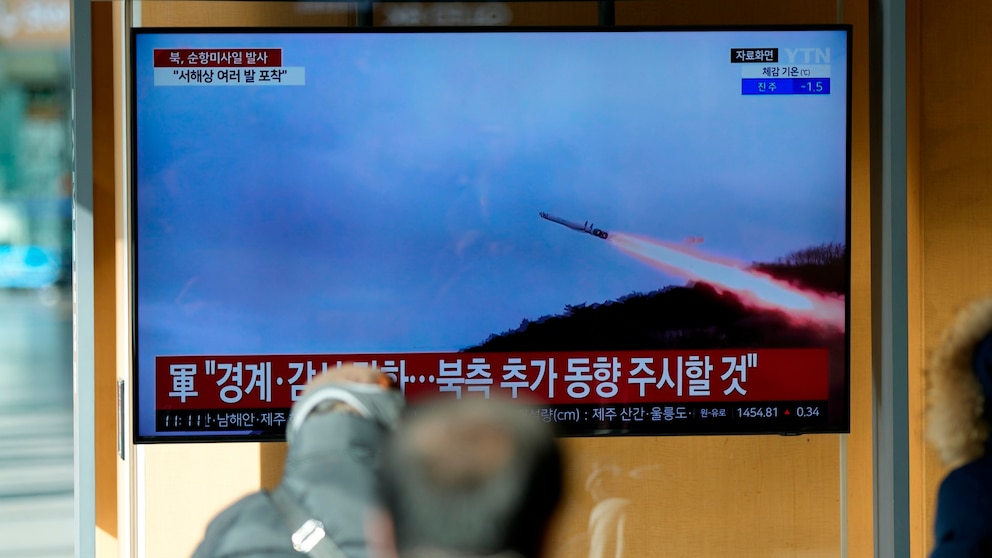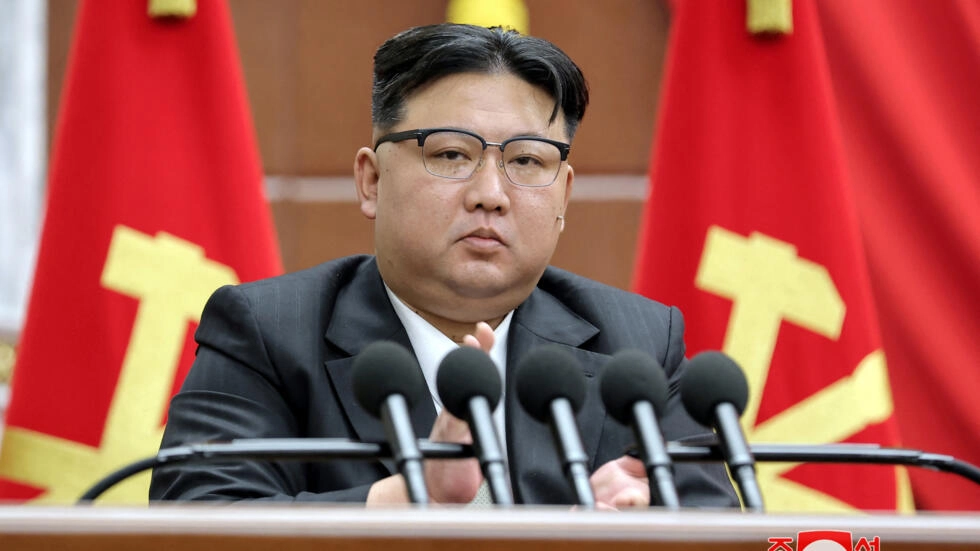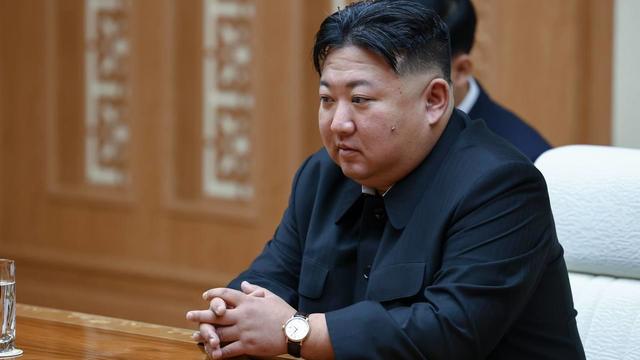This article is more than
7 year oldNorth Korea missile test: ICBM ‘success’ leads to Australia’s condemnation
Australia was quick to condemn the latest test, with Foreign Minister Julie Bishop calling North Korea “provocative” for testing the missile which some speculate is capable of delivering a nuclear weapon to Darwin or Cairns.
The missile, believed to have been launched from Panghyon, 100km northwest of the North Korean capital Pyongyang, flew for almost 1000km for 40 minutes and landed in Japanese waters.
The test of the Hwasong-14 intercontinental ballistic missile under the supervision of North Korean leader Kim Jong-un comes ahead of Prime Minister Malcolm Turnbull leaving for Hamburg ahead of the start of the G20 summit.
Ms Bishop said the “provocative ballistic tests” breached United Nations Security Council resolutions.
“North Korea continues to threaten its neighbours while undermining regional and global security,” Ms Bishop said in a statement.
“North Korea’s long-term interests would be best served by ceasing its nuclear and missiles programs and focusing on improving the lives of its long-suffering people.”

The launch came as Americans prepared to mark Independence Day and sparked a Twitter outburst from President Donald Trump who urged China to act to “end this nonsense once and for all”.
Acting US ambassador to Australia James Caruso questioned claims the missile was, in fact, intercontinental.
He also expressed concern that North Korea continues to violate UN resolutions and is launching missiles in the direction of other countries.
“The whole world has to come together to get them to stop and denuclearise the Korean peninsula,” said.
Mr Caruso said US President Donald Trump has been warning North Korea by calling on other nations to stop trading with them and employing their workers.
“He wants to tell North Korea that if they’re going to be an outlaw among the international community by doing these nuclear tests and launching these missiles, there are consequences.”
The ambassador would not say if he believed the launch was timed to coincide with July 4 Independence Day celebrations in the US or the G20 summit starting in Germany later this week.

MILESTONE HIT
The North’s possession of a working ICBM — something Mr Trump had vowed “won’t happen” — represents a huge milestone for the communist regime.
It could also radically alter the calculus for countries seeking to thwart the military goals of the isolated state.
Some experts said the device could reach Alaska.
Others suggested it could go much further toward the US mainland though there was widespread scepticism of the North’s claim of the missile being able to “strike any place in the world”.
The Hwasong-14 missile test was overseen by Kim, an emotional female announcer said on state television, showing a handwritten order for the launch and pictures of the young leader grinning in celebration, clenching his fist.
The North’s Academy of Defence Science, which developed the missile, said it reached an altitude of 2802 kilometres and flew 933 kilometres, calling it the “final gate to rounding off the state nuclear force”.
There are still doubts whether the North can miniaturise a nuclear weapon to fit a missile nose cone, or if it has mastered the technology needed for it to survive re-entry into the Earth’s atmosphere.
But since Kim came to power there have been advances including three nuclear tests and multiple rocket launches.

‘THREAT GROWS’
US Pacific Command confirmed the test and said it was a land-based, intermediate range missile that flew for 37 minutes before splashing down in the Sea of Japan, adding the launch did not pose a threat to North America.
Moscow’s defence ministry called it medium-range. But Tokyo estimated the maximum altitude to have “greatly exceeded” 2500 kilometres, prompting arms control specialist Jeffrey Lewis to respond on Twitter: “That’s it. It’s an ICBM. An ICBM that can hit Anchorage not San Francisco, but still.”
David Wright, of the Union of Concerned Scientists, wrote on the organisation’s allthingsnuclear blog that the available figures implied the missile had “a maximum range of roughly 6700km on a standard trajectory”.
“That range would not be enough to reach the lower forty-eight states or the large islands of Hawaii, but would allow it to reach all of Alaska.”
Antoine Bondaz, an analyst at the Foundation for Strategic Research in Paris, said the launch was a “humiliation” for Mr Trump after his repeated attempts to get China to rein in Pyongyang, adding that greater missile ranges were probably possible in future tests.

“If you change the initial angle of fire, you could reach a range of 6700km. Ballistics is like throwing a rock: the farther you want to go, the lower the angle of fire,” Mr Bondaz added.
Japanese Prime Minister Shinzo Abe said: “This launch clearly shows that the threat has grown.”
Keywords

Newer articles
<p>After sparking fears among fans by posting a series of crying photos, Justin Bieber has taken to social media with a huge announcement.</p>
Kendrick Lamar Beat Drake By Being Drake
How Kendrick Lamar and Drake changed rap beefs forever Rapid-fire releases and fast pace of modern life elevate diss war to levels unparalleled in hip-hop history.
UN assembly urges Palestine membership after vote
Taylor Swift concert photo horrifies internet
Island nation erupts into violence, three dead
Sean 'Diddy' Combs asks judge to reject lawsuit alleging rape of 17-year-old girl in 2003
Ukraine finds itself in a grave situation. Russia appears to be advancing
Ellen to make TV comeback after two years
How the West's plan to punish Russian oil backfired



